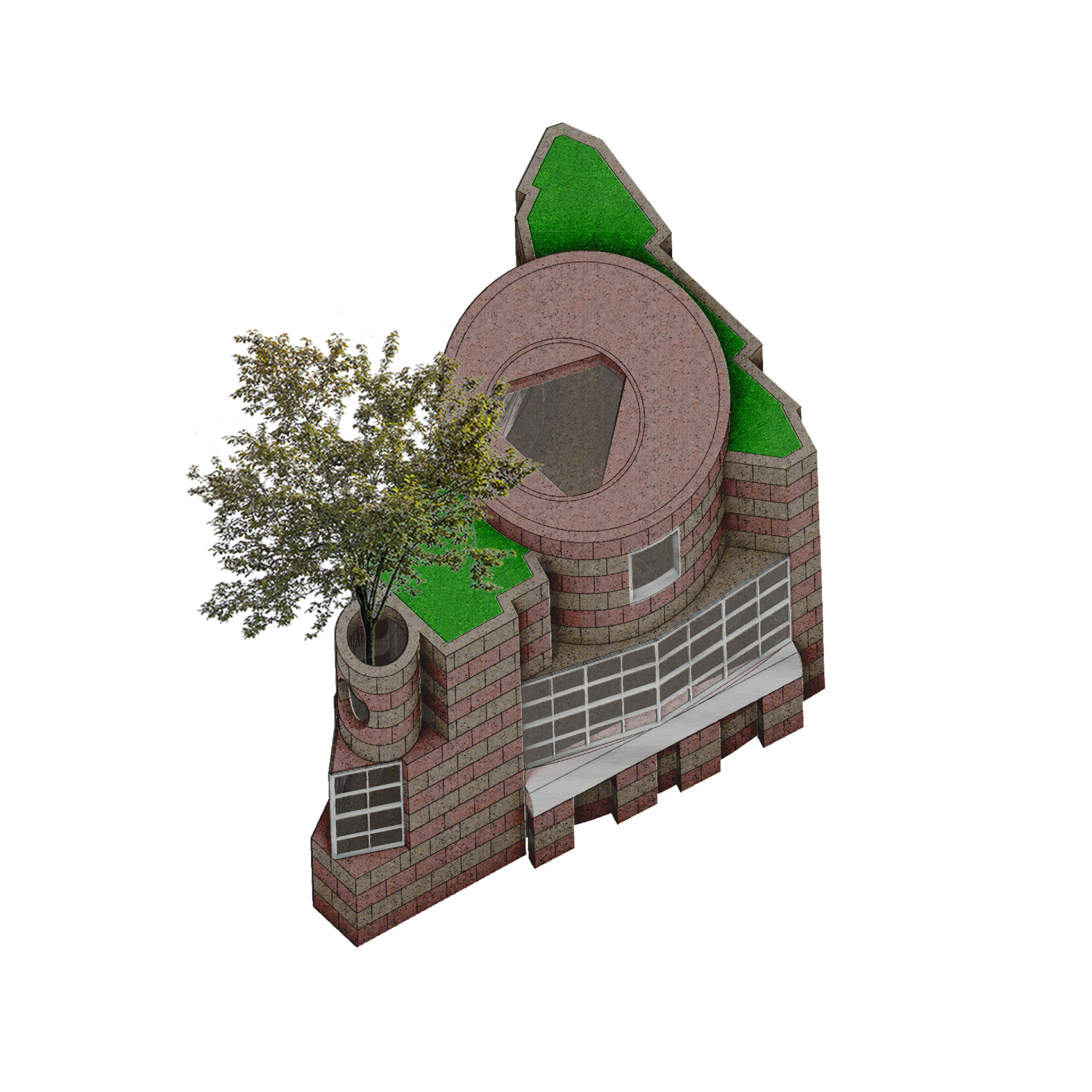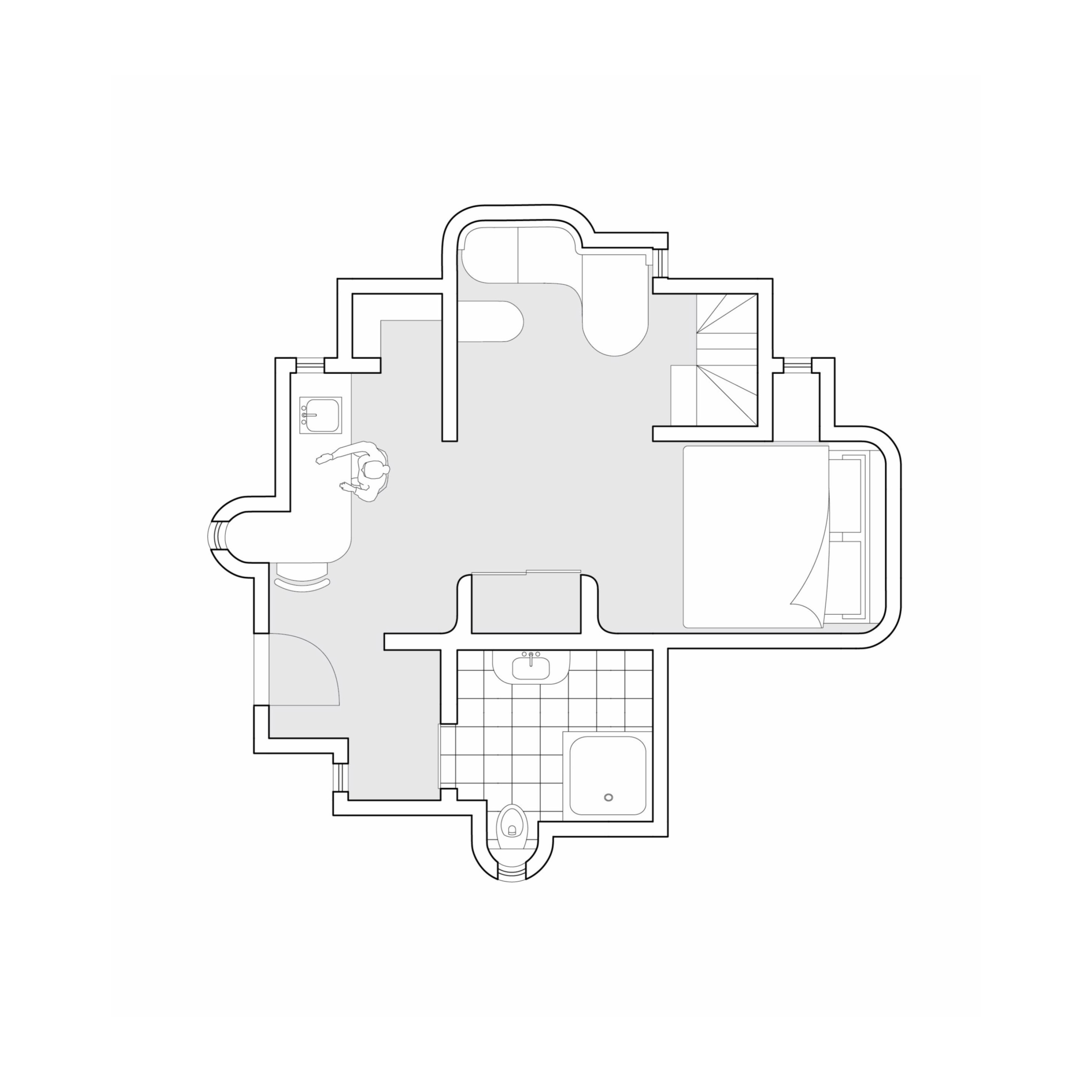Honey, I Shrunk The House!
Spring 2021
College of Architecture and Environmental Design
Kent State University
College of Architecture and Environmental Design
Kent State University
The ubiquity of digital screens of varying sizes has created a realm of scalessness that has arguably rendered the miniature indistinguishable from its full-scale reference material. While a miniature is considered a literal reduction of scale that maintains the resolution of the reference material, conventional architectural scale models rely on abstraction and subtraction in order to amplify certain characteristics, immediately revealing its diminutive nature.
The implied binary between a miniature and a scale model is challenged when cute or caricature-like traits are introduced, which typically renders a reference subject through manners of over-simplification and exaggeration. In other words, the interaction between these two opposing characteristics needs to capture the intrinsic nature or indispensable quality of their reference subject.
The implied binary between a miniature and a scale model is challenged when cute or caricature-like traits are introduced, which typically renders a reference subject through manners of over-simplification and exaggeration. In other words, the interaction between these two opposing characteristics needs to capture the intrinsic nature or indispensable quality of their reference subject.
Students will utilize formal ‘rule-sets’ extracted from formal analysis to shrink their canonical antecedent into a micro-home and a piece of houseware. The downsizing of these canonical buildings permits the altered ‘image’ of these buildings to occupy the liminal zone between miniature and conventional architectural scale model, while maintaining its original formal language.
Students are encouraged to exercise their creative agency in this process to investigate aesthetic categories that are typically overlooked in architecture, such as those investigated in Sianne Ngai in her text “Our Aesthetic Categories: Zany, Cute, Interesting”. Ngai argues that aesthetic categories that most people use to process the hypercommodified, mass-mediated, performance-driven world of late capitalism, should be treated with the same rigor philosophers have reserved for analysis of the beautiful and the sublime.”
Students are encouraged to exercise their creative agency in this process to investigate aesthetic categories that are typically overlooked in architecture, such as those investigated in Sianne Ngai in her text “Our Aesthetic Categories: Zany, Cute, Interesting”. Ngai argues that aesthetic categories that most people use to process the hypercommodified, mass-mediated, performance-driven world of late capitalism, should be treated with the same rigor philosophers have reserved for analysis of the beautiful and the sublime.”
Antecedent: Vanna Venturi House - Robert Venturi & Denise Scott Brown

Antecedent: Yale Art & Architecture Building - Paul Rudolph


Student: Jyae McWilson
Antecedent: No. 1 Poultry - James Stirling


Student: Patrick Othites
Antecedent: Carpenter Center - Le Corbusier
Student: Riley Atkinson
Antecedent: Crawford Manor - Paul Rudolph


Student: Ryan Carlton
Antecedent: Phillips Exeter Library - Louis Kahn


